How to Fit a Rim Lock
Table of Contents
- Introduction
- Choosing the Correct Rim Lock
- Removing Old Door Hardware
- Filling and Sanding
- Positioning the Rim Lock
- Choosing the Correct Kind of Door Knob
- Fitting the Door Knob to the Rim Lock
- Disassembly, Painting, and Reassembly
Helpful Tips from the Video:
- Remove Old Ironmongery: Use a power drill to remove old handles, knobs, latches, or locks.
- Prepare the Door: Sand and fill any holes or rough spots on the door.
- Choose and Mark the Rim Lock: Choose a suitable rim lock, position it on the door, and mark the outline.
- Install the Rim Lock: Drill pilot holes and install the rim lock with screws.
- Measure and Install the Striker Plate: Measure for the striker plate, mark its position, and install it.
- Drill the Hole for the Mortise Bar: Measure and drill a hole for the mortise bar.
- Install the Rose Plate: Measure, mark, and install the rose plate.
- Paint the Door: Apply primer and paint to the door, then let it dry.
- Reassemble the Rim Lock: Reassemble the rim lock using the finishing screws.
- Install the Doorknob: Install the doorknob, ensuring the grub screw is tightened on the flat side of the mortise bar.
Introduction
If you've got an old door that needs a fresh touch or a new door just waiting to be made functional, fitting a rim lock is a fantastic project to take on. Don't worry, it's not as hard as it sounds. This blog is here to take you through the simple steps from start to finish. We'll start by picking out the right rim lock to suit your door, then guide you through getting rid of the old door hardware that's in your way. Next, we'll cover the basics of preparing you're door for the new lock, from filling and sanding any old holes to lining up where your new lock is going to sit. Once we've got that sorted, we'll show you how to get your striker plate fitted in nicely and install your door knobs. And don't forget about painting to match your door's colour scheme.
Choosing the Correct Rim Lock
The first order of business is picking out the correct rim lock. It's not just about grabbing any lock off the shelf; there are a few things you need to consider.
First off, let's talk about 'handed' rim locks. These types of locks are designed specifically for right-hand or left-hand doors. It might sound a little tricky, but don't fret. The main thing you need to remember is to choose a lock that matches the direction your door swings open. It's all about the functionality and ease of use here, so take a minute to read this handing guide to get a better idea.
Now, let's talk about locking options. Do you want to be able to lock the door from the inside, maybe for a bedroom or a bathroom? If so, you've got a couple of options. You could go for a lock with a separate key for added security. Or you might prefer a lock with a sliding bolt, also known as a 'snib'. These can be locked without a key, just by sliding the bolt into place. It's all about what works best for you and the specific door you're working on.
Lastly, let's not forget about style. Rim locks come in all shapes, sizes, materials, and finishes. So, whether you're working on a sleek, modern door or looking to complement the charm of a period property, there's a rim lock out there that'll blend right in. Take the time to think about the look and feel you're aiming for. Are you more of a polished brass or brushed steel person? Do you prefer intricate details or minimalist design?
In the end, choosing the right rim lock is all about considering the needs of your door, the privacy preferences, and of course, your personal style. Don’t rush this decision; your door will thank you
Removing Old Door Hardware
Now that we've chosen our rim lock, it's time to make some space for it on our door. We'll start by removing the old door hardware, which in this case, is a 'lever on back plate' bathroom door handle. If your door hardware is different, don't worry; the basic principles we'll cover will apply to most types.
To get started, you'll need to find the 'turn and release' mechanism - that's the part that you turn to lock and unlock the door from the inside. It's typically held in place by a small screw, known as a 'grub screw', located on the release side. Grab a suitable allen key and completely remove the grub screw, then you will be able to extract both ends of the release from the handle body.

Next, it's time to tackle the handles. These are usually fixed to the door with screws that you'll find on the handle face. With your screwdriver, unscrew both handles, and once that's done, you'll be able to remove the 'mortice bar', that's the long metal piece connecting the two handles.
Next up is the 'sash lock' - this is the main locking mechanism that's been sitting inside the edge of your door. It's generally held in place with a couple of screws on the edge of the door. Once you've got these screws out, the sash lock should slide out smoothly.
Last but not least, we need to remove the 'striker plate'. This is the small metal plate attached to the door surround (or frame) where the lock bolt engages. A couple of screws usually secure this in place.
With all the old hardware removed, we've now got a blank canvas for our new rim lock. But before we get ahead of ourselves, there's some filling and sanding work to do.
Filling and Sanding
With the old hardware out of the way, it's time to start preparing our door for its new adornments. First up, we'll need to deal with the marks and minor protrusions left behind from the old handle screws. These raised areas can be addressed easily with a drill to remove a bit of the material and then sanded down until it's flush with the rest of the door surface. This ensures we have a smooth base for the new hardware.

Where the sash lock was, you'll likely find a much larger hole. That's where a two-part filler comes in handy. There are two reasons why we recommend this type of filler for this job: it sets super quickly, and it's excellent for filling in larger voids. This is precisely what we need for the cavity left by the sash lock.
To mix the filler, you'll need to blend roughly a golf ball-sized amount of filler with a pea-sized amount of hardener. Be mindful that the hardening time can vary depending on the temperature. On hotter days, the filler will set much faster, so it's a good idea to work with smaller amounts to ensure you have enough time to fill in the cavity without rushing.
And here's a little tip: this type of filler sets very hard, which makes it tough to sand down. To save yourself a lot of elbow grease, try not to overfill the hole. Only use what you need to bring the filler level with the door surface.

Once you've filled the holes, it's time to let the filler set. Once it's nice and hard, you can sand it back to create a flush, smooth surface ready for the new lock. Remember, the better the preparation, the better the final result. So, let's take our time and make sure our door is looking its best for the next step!
Positioning the Rim Lock
We've prepped our door and now it's all set for the main event - fitting the new rim lock. So let's get down to business.
Let's begin by placing the body of the lock on the door. It's best to position it centrally on the middle rail, as we've done in our case. To ensure this precise positioning, use a pencil to mark a line along the top edge of the lock.
Next, turn the rim lock over to measure two dimensions: one from the narrow side of the rim lock to the centre of the mortice opening, and another from the top edge of the rim lock to its centre. These measurements are critical to correctly position the mortice bar, which is the part that connects the rim lock with the door knob.

With these measurements in hand, transpose them onto both sides of the door, creating a guide for where to drill the hole for the mortice bar. Drill a 12mm hole at this spot - this will allow the mortice bar to pass through.
Now, we need to pre-drill the fixing holes. Use a drill bit that's slightly narrower than the screws you'll be using for the final installation. This way, the screws will have a bit of material to grip onto when they're put in place. Once the holes are drilled, fix the lock's main body onto the door.
Here's a handy tip: While fixing the main body, use a pozi drive screw instead of the screws supplied with the lock. Since we'll be removing and refitting the hardware a few times, using the pozi drive screw will help preserve the original screws for the final installation, ensuring they remain in pristine condition.
Next up is the striker plate. Align yourself with the level of the rim lock body and place the striker plate where it's supposed to go. Now, with a sharp pencil, mark carefully around the three sides that cover the architrave.
Using a straight edge and a Stanley knife, slowly and carefully cut along these lines. This gives us a clear boundary for chiseling. Remember, the more care you take now, the cleaner your final result will be. So don't rush, and take the time to make these cuts as neat as possible.
With the boundaries established, use a chisel to remove the bulk of the material. To maintain better control over the chisel, you might find it helpful to turn it upside down.
Once you've cleared out the opening, drill your pilot holes as before, use the sacrificial screws, and fit the striker plate into what will be its final position.
Now the lock's in place, the striker plate's fitted, and we're ready to move on to the next step - fitting the door knobs.
Choosing the Correct Kind of Door Knob
Now that we've got our lock and striker plate all set up, we're ready to turn our attention to the door knobs. When it comes to rim locks, the knob choice is not just about style; it also plays a significant role in how your lock functions.
When selecting a door knob for a rim lock, there are a couple of key features to look out for. First, make sure the rose plates (the decorative plates that surround the base of the knob) are not of the fixed variety. On the rim lock side, you won't need a rose plate at all. But on the other side of the door, you'll need one to provide a neat and tidy finish.
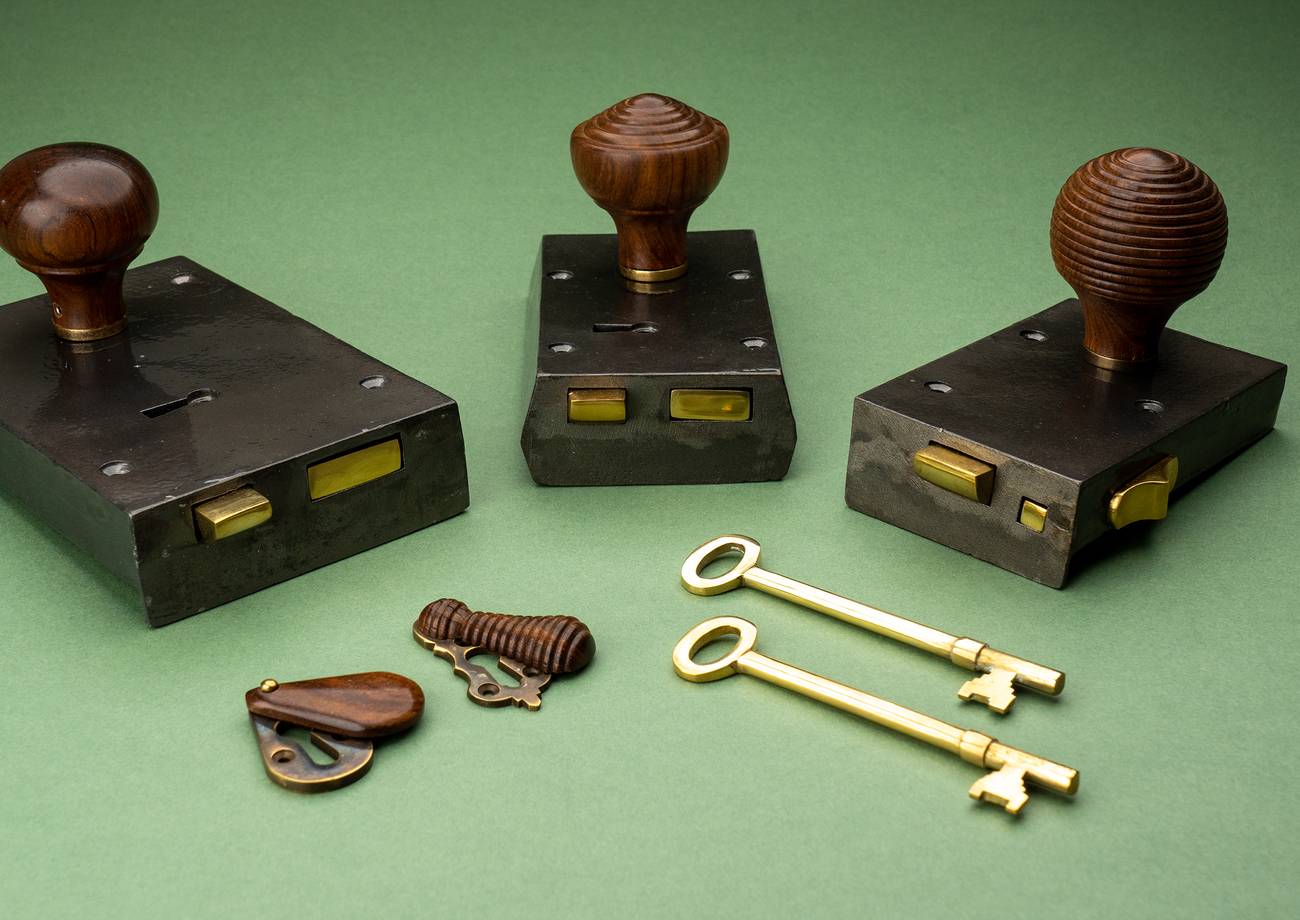
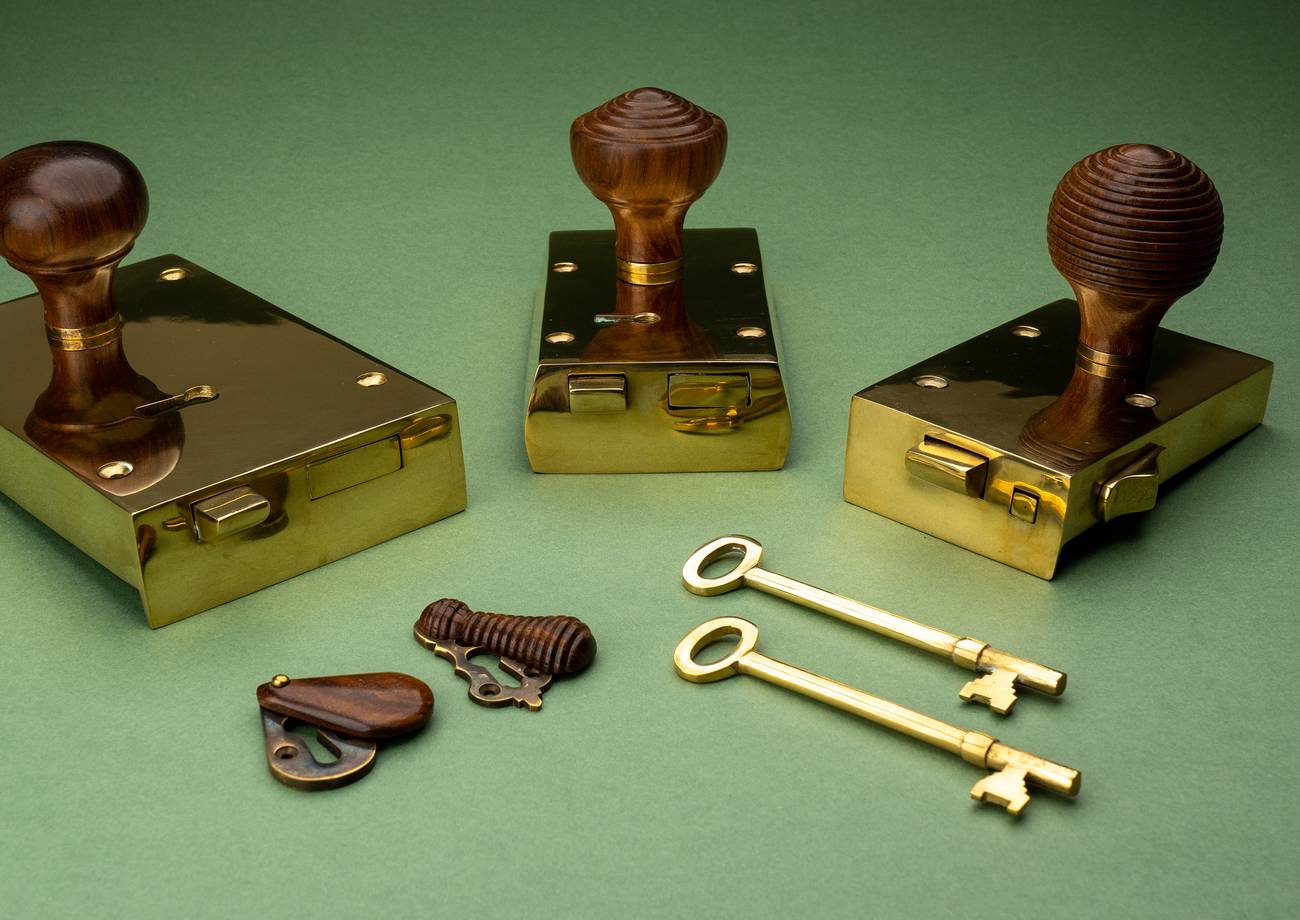
Also you'll need a door knob set that has a threaded square bar which joins the two knobs. This allows the knobs to be connected securely to the rim lock. These knobs are then typically secured with a grub screw to ensure they stay firmly in place.
Confused? Don't worry! We've put together a collection of door knob sets that are perfect for use with rim locks. You can take a look at them here to get a better understanding of what you're looking for. As always, make sure to choose a style that suits the overall look and feel of your door and property. We're not just building functionality here, we're also creating something that looks great too! Up next, we'll dive into how to install these door knobs.
Fitting the Door Knob to the Rim Lock
Now that we've got our ideal door knob set, it's time to fit it to our rim lock. This process may seem a bit daunting but don't worry, we'll break it down into manageable steps.
First, measure the combined thickness of the door and the rim lock. This will let you know how long the threaded mortice bar (the part that connects the two door knobs through the door and the rim lock) needs to be. Adjust the bar to match this measurement.
Next, fix one knob in its final position on the bar and pass it through the rim lock. On the other side of the door, slide the rose plate over the mortice bar. Take a moment to visually align the round opening of the rose plate with the hole the mortice bar passed through. With a sharp pencil, mark where the rose plate's fixing holes are.
Remove the rose plate and drill two pilot holes at a slight angle. This angled drilling will ensure there's enough clearance to install the screws when the knob is in place.
You're now ready to fit the second door knob. Wind the knob onto the threaded mortice bar until it just touches the recessed area of the rose plate. Next, turn the knob back until the opening for the grub screw is facing directly downwards. This position will allow you to securely fix the knob.
And there you have it! You should now be able to operate the rim lock and open and close the door to ensure everything is working as it should be. Next up, we're moving on to the final touches - painting and the final installation!
Disassembly, Painting, and Reassembly
We're now at the final stage of our project. For the perfect finish, it's best to disassemble the rim lock once more and give our door the final touch of paint. If you're like me and enjoy clean, crisp lines, this is the best way to ensure a professional finish.

After carefully removing the rim lock and door knobs, prime and paint the door as desired. Be sure to give it enough time to dry completely and harden off. We don't want to rush things at this critical stage.
Once everything is dried and hardened, it's time for the grand finale - reassembling the lock. But this time, replace the sacrificial screws with the matching screws supplied with the lock. You'll be amazed how much this small detail adds to the final look.
A final tip for this last step: use a hand screwdriver for this job. While a power drill might seem more convenient, a hand screwdriver will give you better control and helps prevent the screw head from slipping and potentially damaging the screw or the lock.
You've successfully installed a rim lock on your door. Step back and take a moment to admire the result of your hard work.
Comments


Explore the charm, functionality, and security aspects of rim locks. We discuss their unique benefits, the possibility...
Read Article

Rim locks have a rich history and unique characteristics that set them apart from other types of...
Read Article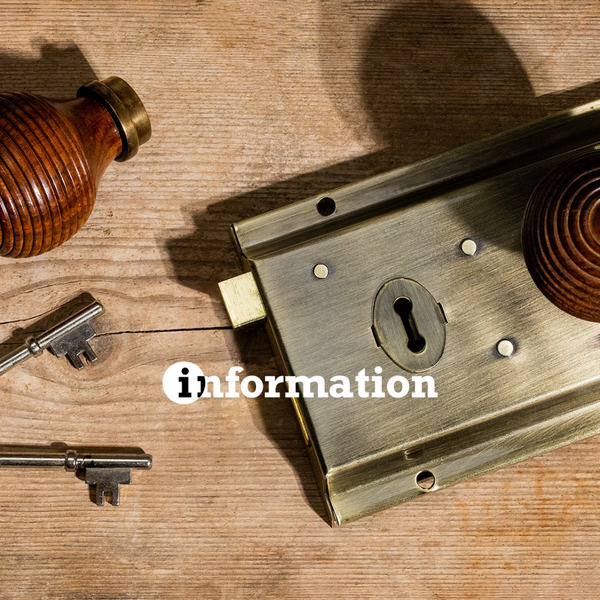

Our comprehensive guide on rim locks, their historical roots, installation nuances, and their place in modern homes....
Read Article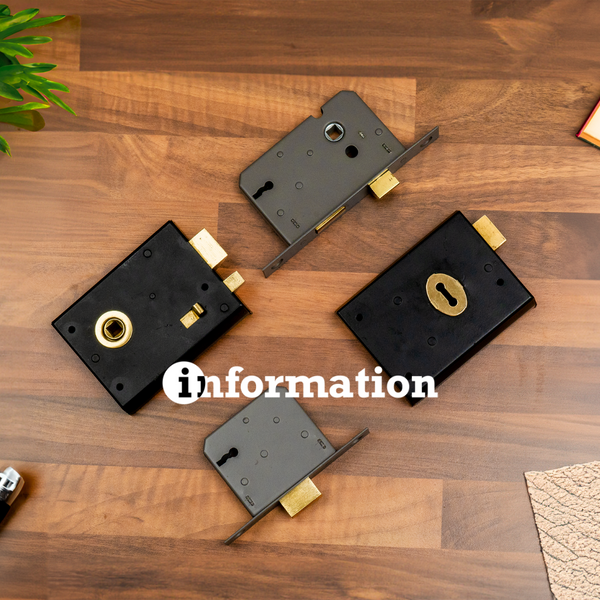

Rim locks offer a vintage look and easy installation but lower security. Mortice latches, embedded in the...
Read Article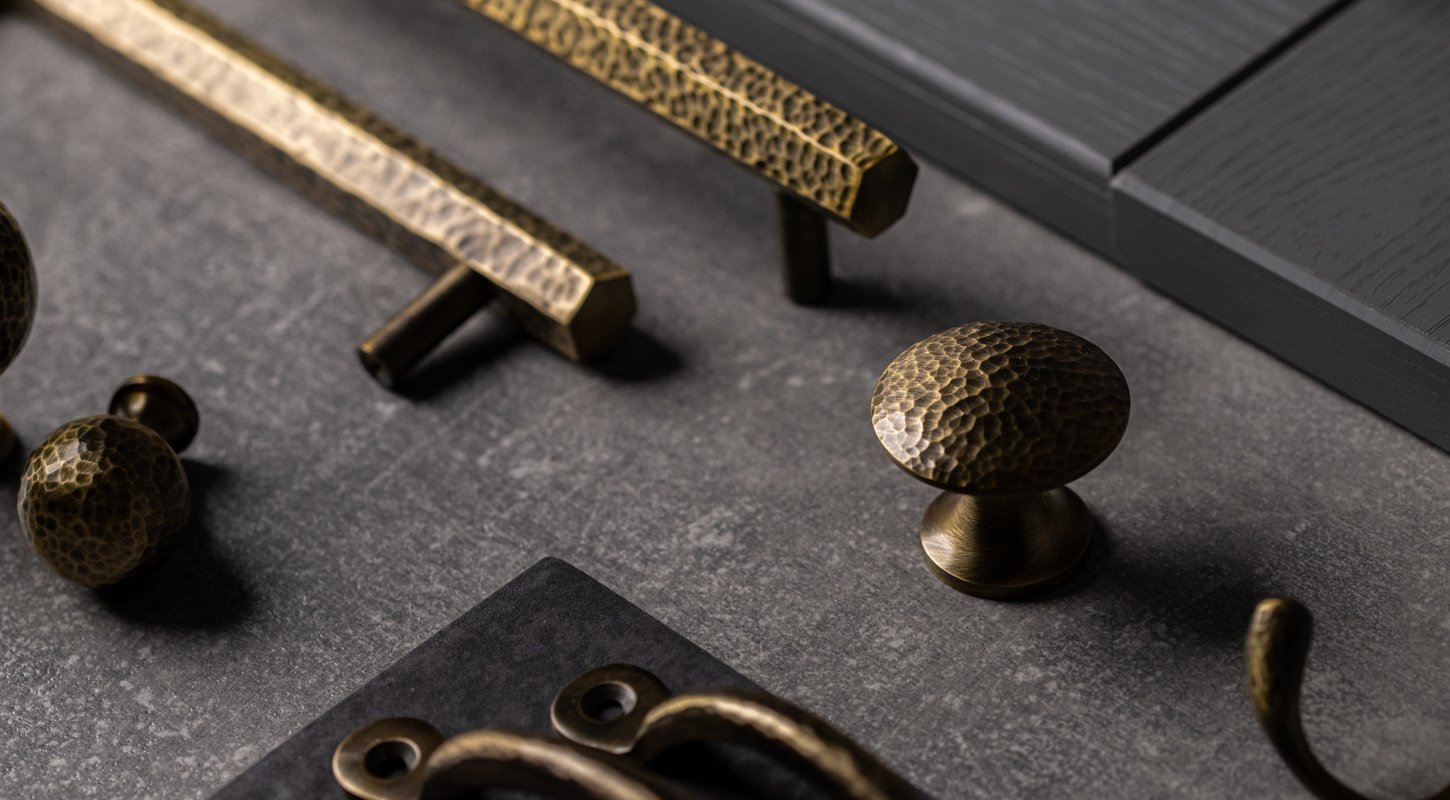





.png?v=1686917959585&options=c_fill,w_2260,h_1280)
.png?v=1686917971736&options=c_fill,w_750,h_700)





5 comments
garreth garrett on Jan 14, 2025
Hi there. Im wanting to replace my old rim lock with a new fresh one from your company. Im worried though, that the position for the key hole and the door handle may not be the same ? Could this be possible ? Thank you. Garreth
Suffolk Latch Company on Nov 11, 2024
Hi K. Whitby, we will need to chisel out part of the door jamb to allow the rim lock endplate to fit snugly and click into place. In our installation video – https://youtu.be/pgFv8vbYz3U?t=155 you can see the process. Kind regards, James @ SLC
K Whitby on Nov 11, 2024
Hello. Do you not need to chisel out any wood for the endplate of the lock so it fits flush with the edge of the door? Or are they meant to sit proud (if there’s enough space between door and jamb)?
Suffolk Latch Company on Jul 31, 2023
Hi James, With regard to your question, this is possible however, it would require a large amount of labour to make it work because it is an outward opening. We wouldn’t recommend putting rim locks on external doors due to the low security and any insurance company would recommend you have a sash lock of some sort. If you would like to discuss more about this, please give us a call 01787277277 Kind regards, James Wise
James Rosser Frost on Jul 31, 2023
Hi I would to fit a rim lock to a porch door (external), but it is outward opening. Is it possible, are there specific versions I should install. Thanks James